Warcraft Roleplaying Guide: Battle Tagging and In-Game Communities
The Beginners Guide to Immersing Yourself in Online Interactive Storytelling
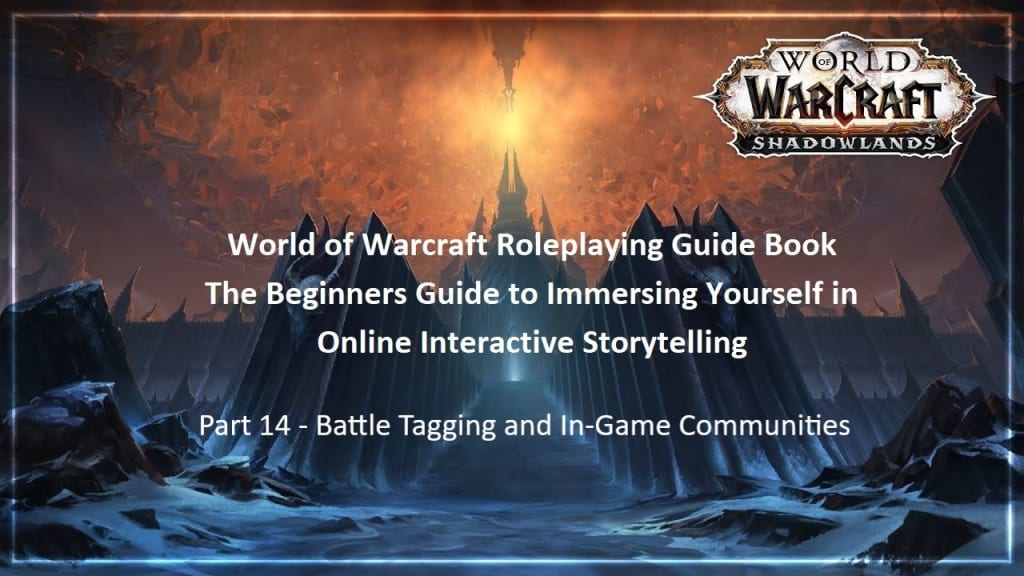
Last time I went over pretty much the simplest ways you can communicate and keep in contact with your friends. Those two ways are often the foundation of everything and serve as a great starting point for your own personal adventures in the world of Roleplay.
Of course, if all you intend to do is just stick to the main Roleplay hubs, and only engage people on the weekend, you can easily just leave it there. A lot of people do that, and just engage in the hobby every so often and enjoy themselves. However, in a lot of beginner’s development, they want to do a little bit more and see what else is out there.
That’s where this section comes in. After a while, doing the same thing over and over becomes tiring and sometimes you just want to explore a little bit and see what else is out there. Plus, most Roleplayers, after getting used to the scene, the jargon, and the same people every day, want to develop their characters and do something on a bigger scale.
It happens to most of us. In fact, a lot of the players that I see now in Event Coordination groups, Guild Master Leadership, Planning, and Officer Roles were people that I started to play with who were new onto the scene as well, or who came after I first joined and developed into collaborators after finding their place on the server. Every single one of us was new to the hobby at one point, and we all came to a point where we wanted to get involved in community development.
So the following two (Technically three) ways of reaching out and staying in contact with friends and other players are excellent in that it does more than keep you in contact with friends: It also allows you to have an easier way to contact a person in case of collaboration.
Now, I won't be going over Event Coordination or the like: That’s an entirely different guide that will be devised down the line. Right now I want to focus on just the communications aspect of Battle Tagging and In-Game Communities and how they're great for beginner Roleplayers who want to spread their wings a bit.
With that said, let me start with the first subject since it'll be the one that you'll be using quite often.
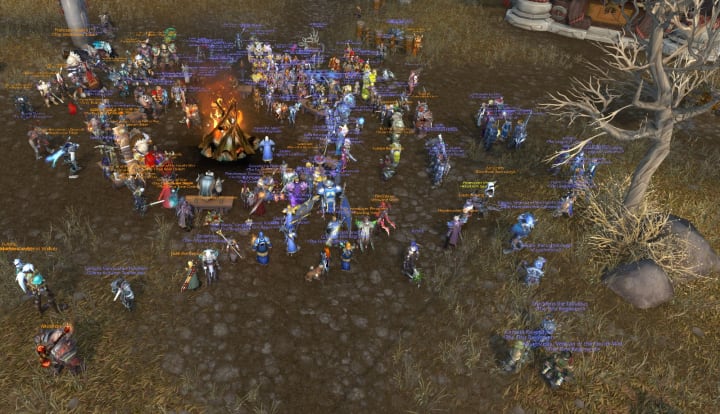
Battle Tagging
First off, let me start with Battle Tagging. What is it exactly?
Well, in a nutshell, it's essentially a better version of the Friends List that I went over from the previous section; just with better functionality. Think of everything that you can do with the Friends list, but more.
What kind of functionality that’s better than the Friends List then?
Well for starters, you can invite members of the opposing faction. So if you're at a Roleplay event and you see someone of the opposite faction and you interact with them, you can ask for their Battle Tag, and invite them to your friends' list that way. Everyone who creates an account on the Battlenet App can customize their username, followed by a 4 digit identification code that's randomly generated and unique to your personal self.
Here's mine as an example.
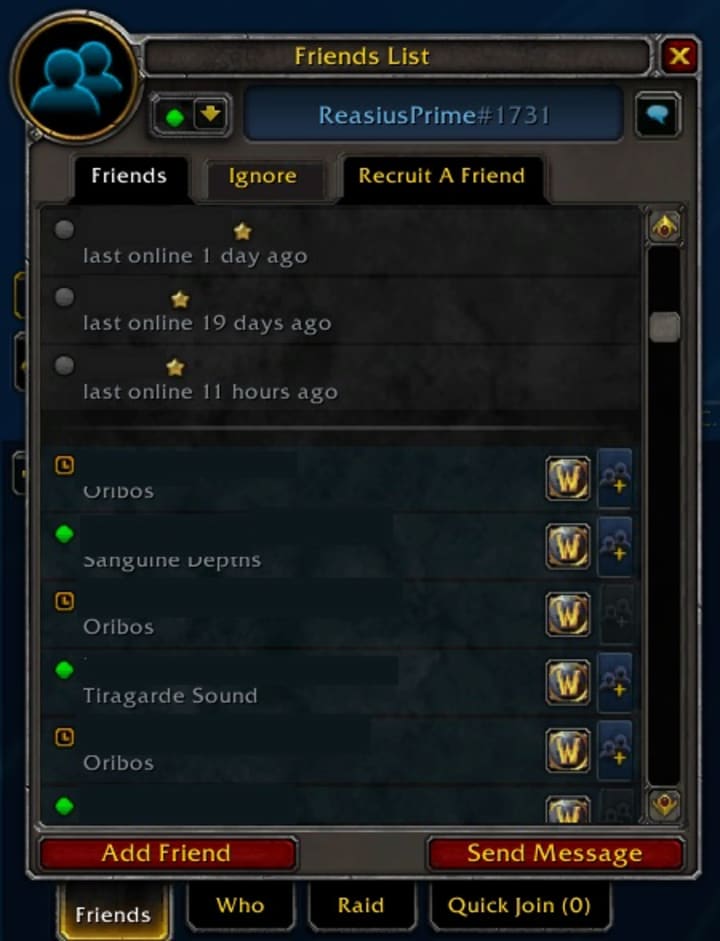
The second thing that makes it better than the Friends list is you can see when your friend logs on and off and even notifies you if they're playing a different game altogether. Through the Battle Tag, you can see what character they're on, what server they're logged onto, and if they're playing World of Warcraft, Overwatch, Hearthstone, or any other Blizzard game attached to the Battle App.
The third thing is that you can even quickly group up with them, no matter what server they're on - provided they're of the same faction of course. So if you two decide that you don't feel like Roleplaying together, and decide to do a dungeon or two you can do that regardless of the server you're on. In essence; if one of you is from Moon Guard, you can invite and do content together even if the other person is on another server, such as Burning Legion, Emerald Dream, or anywhere else.
The fourth upside is that you can group your friends into "Friends" and "Favorites" categories, having a quick way to access those friends that you like to talk to. For me, I use this feature to quickly favorite both the officers of my main Roleplay Guild and my main RP partners.
The fifth and final thing that you can do is to send a broadcasted message that everyone on your Battle Tag list can see. While this doesn't see a whole lot of us, and doesn't have very many Roleplay applications, it’s still none the less a fun little thing you can do to leave a message broadcasted out to everyone. Me personally, I tend to either make funny quips or invite people to check out my Twitter feed for any reason.
So with all that said, there has to be a downside to it right? After all, with all of these upsides to Battle Tagging, why don't people just USE that over the regular Friends List in the game since it seems by and large so much better.
Well, there are actually.
The first biggest downside is that when you're logged onto it, you're logged on and everyone on your friends' list can see where you are, and what character you're on. Being able to be connected so easily means that you're able to be seen and connected with... well... easily. Thankfully you do have a way to mask your online status if you want to be alone for a little while. All you have to do is click on the upper left side, beneath your name, and click from "Online" down to "Appear Offline" and the little colored orb by your name will go transparent.
This way, you can safely have your autonomy without having to put yourself on "Do Not Disturb" or even "Away". Still, though, some people find that a major downside to the system.
The second downside of the system is that you're still extremely limited in the number of friends you can have, and it's shared through the Friends List system - even throughout all of your characters. This number is around ~500 players like I said in the previous section, and while a majority of players won't ever reach this stage - most people having around 100 at MOST - it's still a limit that should be remembered for those players who like to invite everyone.
So what this means is that if you do hit the limit, you'll have to rotate friends in and out on your list, or cut people out who might not have logged on in a while.
Still, for all of its faults, the positives outweigh the negatives on a massive level as you can see, so it's often the preferred way to be friends with people.
So why even have the Friends List then in the first place?
Mostly because some people feel that the Battle Tag is more intimate, and don't want to make that step quite yet when first meeting people. You're not only giving another person your Tag that can easily be given out to other people but sometimes people put more identification into their Battle Tag names that they're not comfortable with people knowing.
In essence; some people just like the autonomy of the Friends List more than the Battle Tag system and not having the pressure of being able to be seen so easily on them. So for a lot of people, they'll go straight to the Battle Tag option, while some people want to make friendships at a slower pace and prefer building up to that with the Friends List and there's nothing wrong with either option.
However, if you DO use your Battle Tag frequently, there's another big use that you can use it for that goes beyond just keeping a group of friends close at hand. This brings me to the next subject that I wanted to discuss: The In-Game Community.
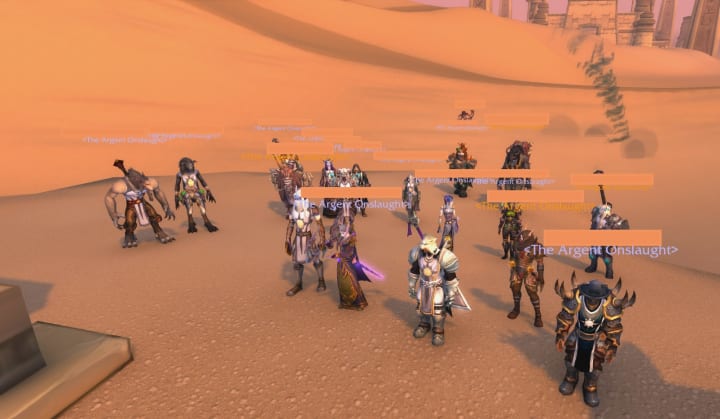
In-Game Communities
I've talked at length previously about "The Community" while going over it slightly on just how large it is. I've also briefly mentioned in the previous section how Guilds are micro-communities within the overall larger community as well. So what exactly is an "In-Game Community", and how is it different from Guilds and the community itself, and how does it benefit a newer Roleplayer?
Well, think of it like this: You have your guild, and more than likely it has a central theme that it wants to fulfill. To showcase what In-Game communities are, let’s assume that your guilds theme is centered around mercantile roleplay and that most of its members play as merchant characters that craft and produce items to sell to other players.
Let's also assume that you and your guild are not the only people on the server with this idea either and that several other guilds have the same idea and theme of being Merchants - each with their own unique cast of players who specialize in items to sell to potential customers.
Let's also assume that these players all get along as well, and want to do things with one another. So what do they do? Well, eventually the leaders of these guilds decide to take the 4-5 other guilds with the theme and create an organization that’s based on an actual real-life Medieval styled Guild all centered on Mercantile Roleplay. So the leaders and other collaborators decide to write up some basic rules to follow, a basic leadership structure, and decide to name it something simple such as "The Azeroth Merchant Coalition" (Or, AMC for Short).
From there they open membership to each guild, and even other players from other Guilds to join up, and they collaborate on running events; such as Markets, Crafting classes, and even in-game material components for actual crafting goods.
That is essentially what an In-Game Community is. It's just another layer of organization that players create with one another to help facilitate Roleplay with one another. Mostly because Roleplayers, by and large, are social people and want to go out and create stories with more than just their guildmates. Some do, of course, and there's nothing wrong with that, but some people like the idea of there being some sort of structure or organization that they can join.
It's just a larger group, with a similar theme that pulls people in for storytelling purposes. Think of it as a middle ground between Guild, and the overall community.
Of course, mercantile style guilds aren't the ONLY type of In-Game Community you'll find either. There are organizations for all sorts of things from Mage Tower Schools, to Knight Orders, to Mercenary Bands, to Adventurer Coalitions, to Military Organization, to anything else as well.
Now, this might seem a bit overwhelming for beginners new to the Roleplay scene, and that's perfectly alright. Good Organizations, and Good Guilds, don't require participation if you don't want to. A lot of these things are, more or less, side things that you can join and aren't designed to be mandatory. Of course, if you want to join in on the collaboration then - yes - their membership is mandatory; but for the regular Roleplayer who is just getting their feet wet, it's simply another option to go with.
With that said, what are the pros and cons of In-Game communities like this?
Well, the first upside is pretty obvious: You get a larger pool of people to interact with. When you know when and where the meetings and events take place, it gives you a chance to structure and schedule your Roleplay time to go, and often beginners like to hang around and observe the first few times these types of events take place and then start interacting with people when they get more comfortable.
The second upside is that it gives your character direction: Which is more of a Roleplay thing than a friend maintenance thing. So simply keep that in mind.
The third and most important upside to In-Game Communities is that it allows you to maintain a network of friends. Granted Friend Listing and Battle Tagging are easier ways to remain in contact, but having a place to go and network is important as well. Just like in real life when it comes to networking and making friends with other people in your career, In-Game meetings allow you to showcase not only yourself and your ability to Roleplay, but also to get along with other players as well and get to know the organizers.
This becomes helpful when you start to become more involved in larger community-driven events - or if you're someone who prefers more intimate storytelling, a chance to make friends who can potentially teach you how well to organize and develop a story.
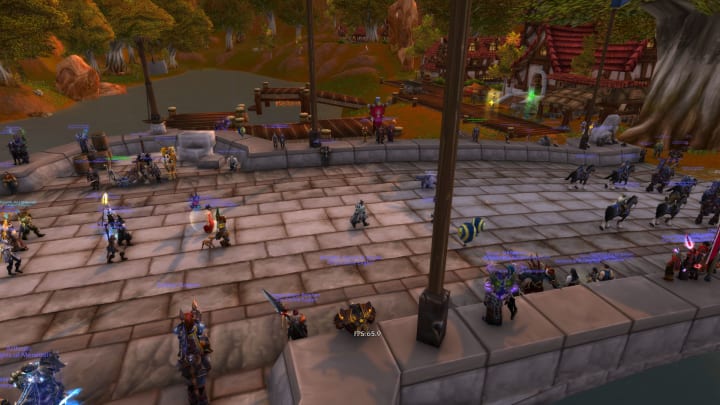
So there are some cons to it all right?
Luckily, there aren't many. As I said, attendance isn't mandatory if you're not on the planning staff. The only major downside to In-Game Communities is just that if your guild is a part of several, it might make juggling them a bit tough if you wanted to go to them all. However, that’s more of a time constraint issue than an issue with In-Game Communities themselves.
So how do you get involved with them?
Simply ask. That’s all! If your guild is a part of one, ask about the time and meeting place, and show up, and ask if you can be involved in it. Most In-Game communities don't have membership requirements other than being a part of the guilds that are a part of the In-Game Community.
However if your guild isn't, but it seems something that you would enjoy getting involved in? (Such as a weekend "Fight Club" style boxing group) Well, you find out if there’s a membership requirement, inquire about it, and join.
Once again, that’s it!
Now, once you're a member of an In-Game community, how do you stay involved? Well, there are two major ways. One of which will be rolled up into the next segments discussion on staying in contact with friends. The second way is through the use of Blizzard Groups, which I'll be going over right now.
Blizzard Groups
Remember when I talked about both the Battle Tag system and the Blizzard App previously? Well, there's a lot more functionality to the App than you realize, and is useful for more than just connecting to your games, and checking your friends list to see who is on both in and out of the game.
Another way that you can stay connected with Friends, and In-Game Communities outside of the third-party programs I'll be going over later, is the inbuilt functionality of the Group System.
So, what is it exactly?
Simply put it's just the Blizzard Apps version of taking servers from the Discord app, but watering them down. Now, that sounds bad, but really Blizzard Groups have a lot of inbuilt functionality that makes them useful.
For starters, you don't have to alt-tab out to any other program to use it. You can enable the chat functions directly onto your Chat Box or access them in-game to read. In fact, Blizzard Groups are listed right below your guild when you go to access the guild tab.
The second use that they have is that it works as a repository of players in the game to see who is online, offline, or to connect with potential friends to add them to your Battle Tag list. With Discord or other third party programs, anyone with the invite to those servers can get in. While the same CAN be said for Blizzard Groups, they still require a bit of effort to get in and you can curate it a lot easier.
The downside though? Well, as I said, they don't see a whole lot of use outside of In-game communities, or serve as an In-Game communication network (Such as radios and the like to keep players connected on an IC level despite being in separate areas).
So, if you have an interest in using them then, how do you access Blizzard Groups?
First off, keep in mind that Blizzard recently updated their Blizzard App to be a bit more streamlined, as of February 2nd, 2021. So a lot of this information on how to access it is fairly new. It should look like this when you log in.
You'll notice at the bottom right section a small button beneath your Battle Tag friends that says "Chats and Groups.” Click on that, and it should bring up a second window that looks like this:
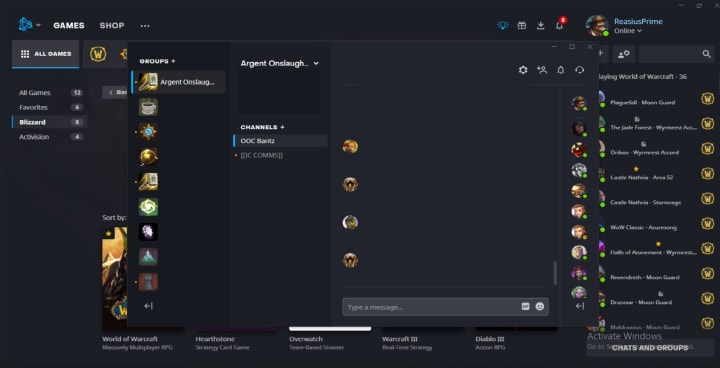
Notice the organizations on the left side beneath the "Groups" panel? (That I did blur out). Those are all different in-game organizations. As you can see from the one that I've got highlighted now, there are two different channels beneath the "Channels" column that one can talk into. The channels for that particular community is named "OOC Bantz" and [[IC COMMS]] to show what they're designed for exactly and their functionality.
You can even create a group yourself, and it's relatively easy. Simply click on the "Groups + “button on the upper left-hand corner and it'll bring up another window with two options; to "Create Group" or "Join Group".
Creating one is pretty simple. You just enter a name, a description, give your group an avatar, and then you can start inviting people in.
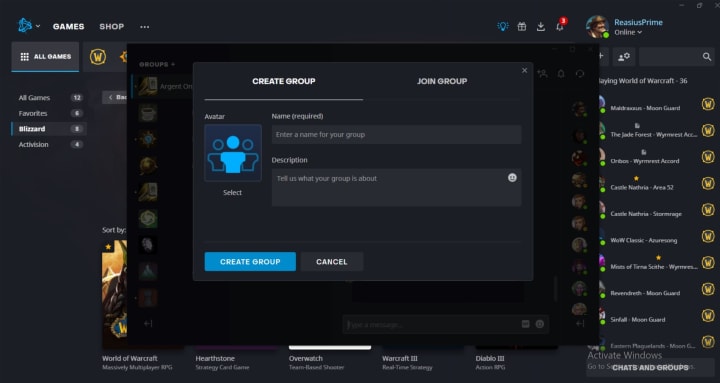
If you've joined an In-Game organization and they have a Blizzard App group with an invite, you can join it by clicking on "Join Group" instead, and it'll bring up an input bar for you to put the special invite code in. That’s all it takes! It's extremely easy.
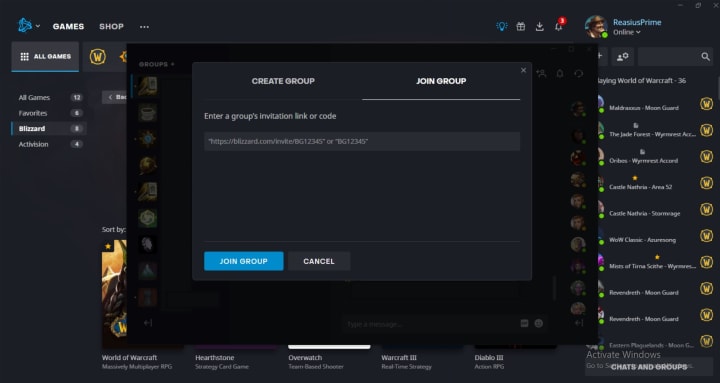
Conclusion
So there you have it: Three ways that you can stay connected with a larger community outside of your friends' list and your guilds. While one of the ways isn't used extensively, the other two ways are extremely helpful because not only does it help you keep a list of contacts and friends, it also allows you to expand and improve your involvement in the community itself.
Of course, these are by no means the end of ways for you to stay in contact and even expand your friends' list. These are just sort of the "middling" way that’s used by beginners who want to do a little bit more than just walk around Stormwind/Orgrimmar all day and do walk up Roleplay.
The next section I'll be going over will discuss the final ways for you to stay connected with people using tools that aren't found in World of Warcraft. Don't worry though, if you think it's complicated! It actually isn't and is a lot of fun to do once you get set up.
So stick around, and hope to see you then!
Start of this Guide
About the Creator
Rease Archbold
Nothing more than an Indie Author with several books in the works who likes reading, writing, telling stories, relaxing, and having a good cup of coffee.
Works include themes of Fantasy, Horror, Sci-Fi, and non-fiction on the gig economy.






Comments
There are no comments for this story
Be the first to respond and start the conversation.